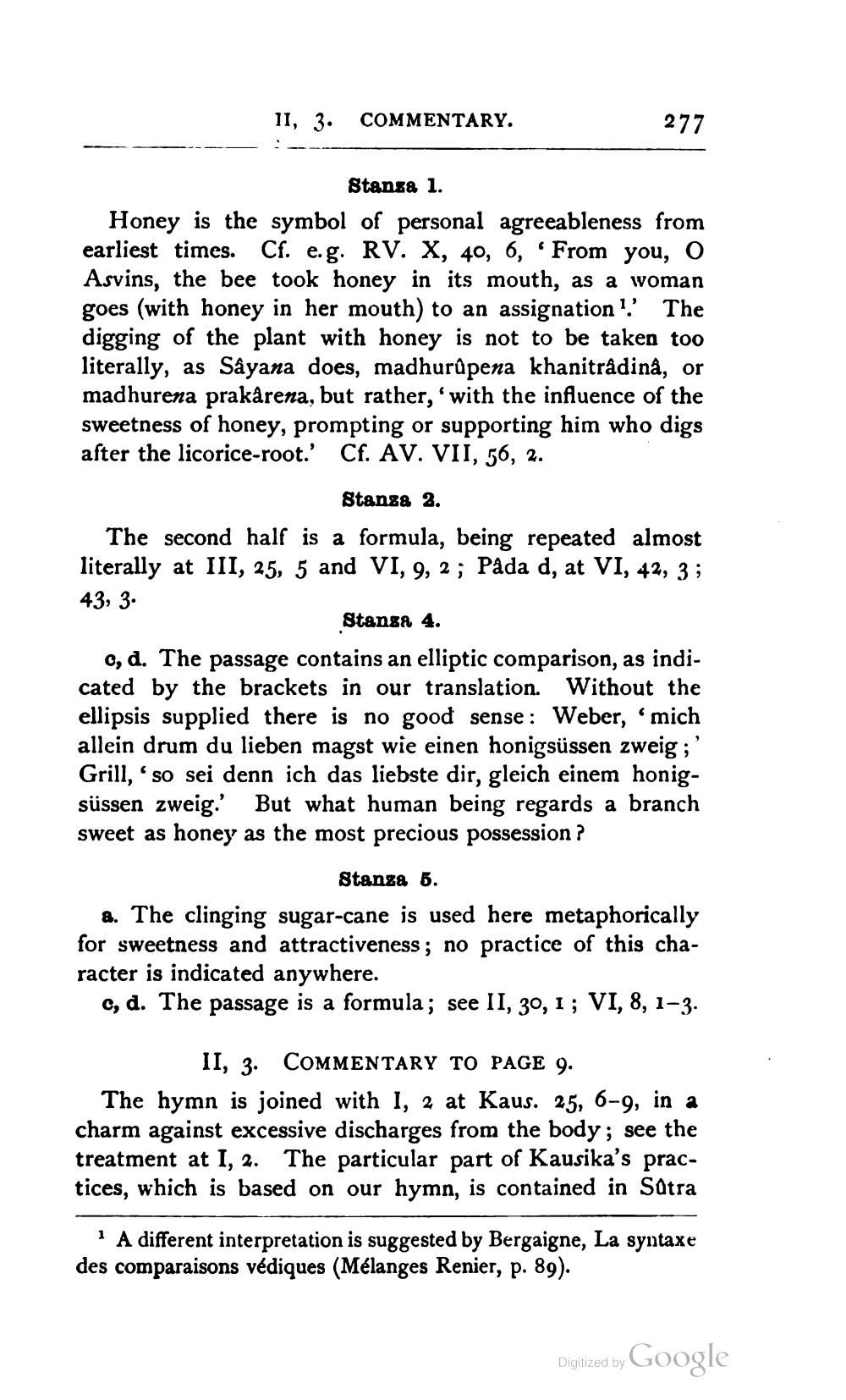________________
11, 3. COMMENTARY.
277
Stanza 1. Honey is the symbol of personal agreeableness from earliest times. Cf. e.g. RV. X, 40, 6, 'From you, O Asvins, the bee took honey in its mouth, as a woman goes (with honey in her mouth) to an assignation". The digging of the plant with honey is not to be taken too literally, as Sayana does, madhurupena khanitradina, or madhurena prakårena, but rather, with the influence of the sweetness of honey, prompting or supporting him who digs after the licorice-root.' Cf. AV. VII, 56, 2.
Stanza 2. The second half is a formula, being repeated almost literally at III, 25, 5 and VI, 9, 2; Pada d, at VI, 42, 3; 43, 3.
Stanga 4. 0, d. The passage contains an elliptic comparison, as indicated by the brackets in our translation. Without the ellipsis supplied there is no good sense: Weber, 'mich allein drum du lieben magst wie einen honigsüssen zweig ;' Grill, so sei denn ich das liebste dir, gleich einem honigsüssen zweig. But what human being regards a branch sweet as honey as the most precious possession ?
Stanza 5. a. The clinging sugar-cane is used here metaphorically for sweetness and attractiveness; no practice of this character is indicated anywhere.
c, d. The passage is a formula; see II, 30, 1; VI, 8, 1-3.
II, 3. COMMENTARY TO PAGE 9. The hymn is joined with I, 2 at Kaus. 25, 6-9, in a charm against excessive discharges from the body; see the treatment at I, 2. The particular part of Kausika's practices, which is based on our hymn, is contained in Satra
A different interpretation is suggested by Bergaigne, La syntaxe des comparaisons védiques (Mélanges Renier, p. 89).
Digized by Google




